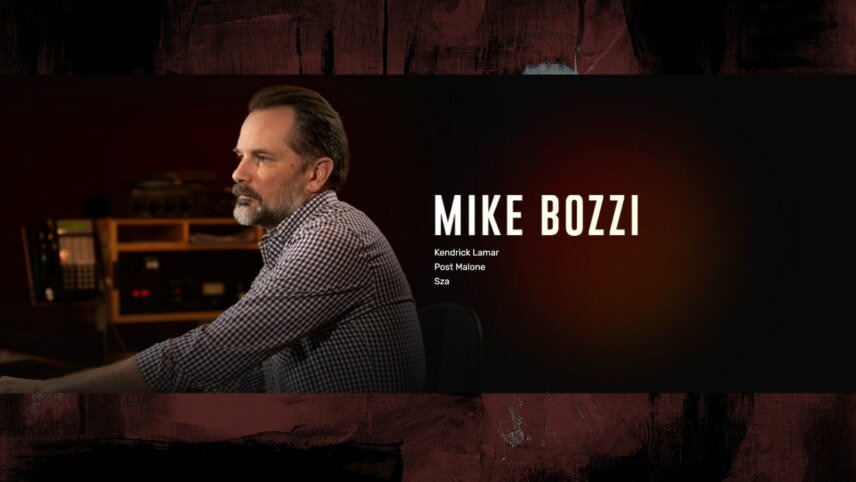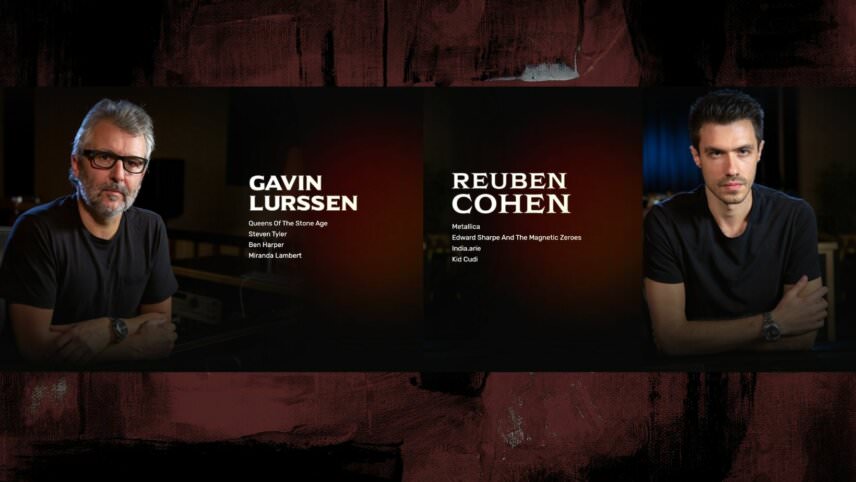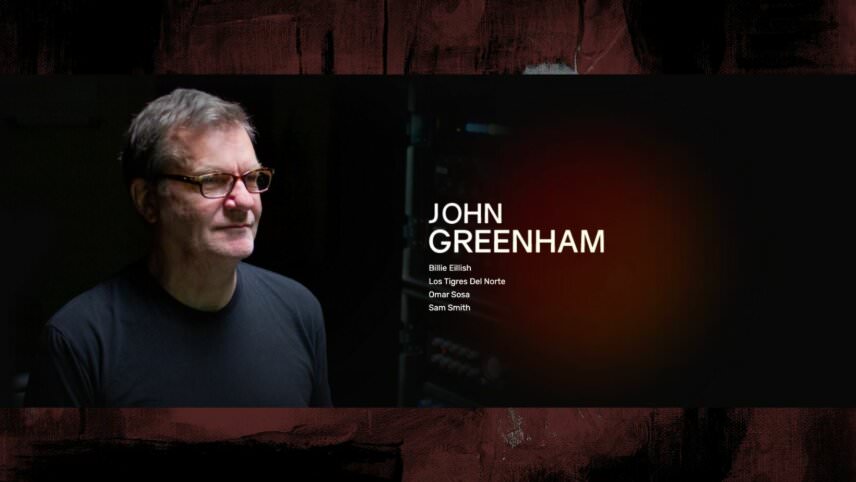We were given AAA to really look around Mix With The Masters. Having only seen the live experience at NAMM over the years, it’s been fun to take a deep dive into their huge online offering. With a tonne of powerful names, here are three courses on mastering that stood out.
Mastering. Is there anything more misunderstood in music production? Perhaps that might be a bit strong yet of the many requests we receive daily, a large chunk is about mastering.
We’ve covered the dark art on many occasions and as always focused on electronic music. However, it’s important to further your horizons and see if you can pick up tips elsewhere that might assist you in your electronic music career. You might learn as much from studying Blawan’s mastering as you do the mastering process for Blink 182. In short, it’s important to be open-minded.
With that in mind, we duly accepted an invitation to look through what Mix With The Masters does. What they appear to do is get the cream of the crop from the studio world onto one platform. We wanted to get involved and find out what’s actually being taught and what takeaways for Attack’s readers are there.
We round up three mastering courses with some of the key highlights you might consider in your own productions.
Mike Bozzi

Worked with?
Kendrick Lamar, SZA, Post Malone
Five takeaways from watching Mike Bozzi’s course:
- Mentorship matters. Mike spent 20 years under the mentorship of his predecessor, “Big Bass” Brian Gardner (a legendary engineer with more than 1600 credits to his name including Jennifer Lopez, Busta Rhymes, David Bowie, and Tom Delonge), before taking charge of the room he occupies at Bernie Grundman Mastering in LA. Whether you’re a techno producer or a mastering engineer, there’s no replacement for a mentor who can give you knowledge that personal experience alone won’t help you gain, a person who can open doors for you that you can’t open alone.
- It can take years to become an overnight success. Right after Mike talks about the twenty years he spent playing second fiddle to his mentor, he describes how, after his mentor retired and Mike took over his room, in “the short two and a half, three years” he’s spent running his room at Bernie Grundman mastering, he’s mastered two Grammy-winning records and been involved in a variety of ultra-high-profile projects. Tenacity matters. Consistency matters. Sometimes it takes years of paying dues before you find yourself where you want to be… and sometimes far beyond.
- Small changes accumulate. Mike describes an EQ move he does on the Kendrick Lamar track “Humble.” He uses a low cut to remove ½ dB under 40 Hz. Just a half a decibel. And he goes on to describe a number of miniscule-sounding changes he makes in the mastering process. The final product, however, sounds significantly louder, punchier, and clearer than the mix did before mastering. Those small moves add up.
- You’ve got to know your gear. Mike mentions that for close to 25 years he’s been working in the same room on the same studio monitors and a lot of the same gear. Rather than buying every newest toy on the market and hoping it’s better than the last, he has learned the nuances of his equipment and as a result he can be confident with every move he makes.
- …and your gear better be good. In a mastering studio, everything matters and performance and consistency are critical. There’s a reason that an off-the-shelf mastering EQ can cost four, five, even seven thousand pounds. Low noise, low distortion, musical tone, and repeatable results require expensive components.
Gavin Lurssen & Ruben Cohen

Worked with?
Pharrell Williams, Caparezza, Queens of The Stone Age, Metallica, Kid Cudi
Five takeaways from watching Gavin Lurssen & Ruben Cohen course:
- The loudness wars are over. In 1994, Waves released the L1 Ultramaximizer, a digital limiter plugin that heralded the beginning of the “loudness war.” Digital limiters could prevent clipping in ways that previous analog gear simply couldn’t, and engineers used this to their advantage. They would crush the dynamics out of their tracks using digital limiters in order to get the tracks to sound louder (and thus more exciting) than the competition when played back on the radio or a CD. Fast forward to 2022, where most music is consumed via streaming services. Streaming services use advanced loudness regulation algorithms that put dynamically squashed tracks on an even playing field with highly dynamic content, and in fact highly limited content often sounds quieter on streaming platforms than less compressed or limited content does. The loudness war peaked a decade ago and we can move on.
- Analog gear is the professional’s choice. Gavin and Ruben make sure to mention that they have access to whatever plugins they need, but their analog mastering gear is where they do almost all of their work. It sounds fantastic. As we all know, the analog magic isn’t limited to outboard processing, but it exists in synthesizers as well.
- EQ comes first. Before doing any compression or limiting, these engineers use analog EQs for tone shaping and even a little saturation. Compression and limiting help tame peaks. EQing emphasizes certain frequencies and can create new dynamic peaks. Best to introduce the restraining element of compression and limiting after introducing EQ.
- Think multiband. Gavin and Ruben have an EQ towards the front of their chain that they often use to add air and sparkle to a mix by boosting high frequencies. However, towards the end of their signal chain, they use a frequency-specific compressor (think “multiband compressor” or “de-esser”) to tame any wildness they accidentally introduced earlier in the chain by boosting the highs.
- Black t-shirts. They’re not only for techno DJs.
John Greenham

Worked with?
Billie Eilish, K.Flay, and Donna Missal
Five takeaways from watching John Greenham’s course:
- Arrangement is critical. If a track is going hard with full instrumentation from the beginning until the end, streaming services will pull down the volume of the mix. As mentioned before, streaming services have sophisticated algorithms for regulating loudness from track to track, and these services look at the average loudness across the entire track. That means that a track with quiet passages and loud passages will actually end up coming out louder than a track that’s loud from beginning to end.
- One size does not fit all. Every track is different. Just because a certain compression or saturation or EQ technique worked on the last track doesn’t mean it’s appropriate for the project you’re working on right now. Use your ears and adapt.
- Know who plays which role. John realized early on working with Billie and Finneas that Billie’s whispery vocals provide enough high-frequency content for a whole track. No high hats or “sizzly” content required. For a Billie Eilish track, saturating and widening the lead vocal and pushing it to fill a lot of space is the right approach. For other tracks… maybe that’s the wrong approach. So know what your track is trying to do. Do you have a soaring lead that should own the high frequencies? Then maybe you need to de-emphasize the hats and cymbals. Do you have a percussion-driven track with many interlocking elements? That’s a much different approach.
- Even “vintage” plugins are cool. When something works, it works. John uses the Oxford Inflator (easily 20 years old at this point) and we can point to many plugins that are still constantly used in the professional world despite their age – the Waves “renaissance” plugins and VocAlign, to name a couple.
- Again… black shirts. Not just for techno
About Mix With The Masters
Mix with the Masters organizes the most prestigious and sought after events for music producers and engineers. Spanning over a decade, our seminars have brought together thousands of participants in week-long seminars at Studios La Fabrique, Masterclasses all over the world and through Online events.
There is a selection of MWTM membership types, rates, and payment plans available.
- – Pro membership ($319 upfront or $27.90 monthly for one year)
- – Student membership ($159 upfront or $14.90 monthly for one year)
- – Free membership (limited video content included and the option to buy certain series individually)
The paid membership plans give twelve months of unlimited access. The monthly plans require a commitment to pay once per month for a full year. Student memberships require proof of student status. More information can be found here.
*Attack Magazine is supported by its audience. When you purchase through links on our site, we may earn an affiliate commission. Learn more.
